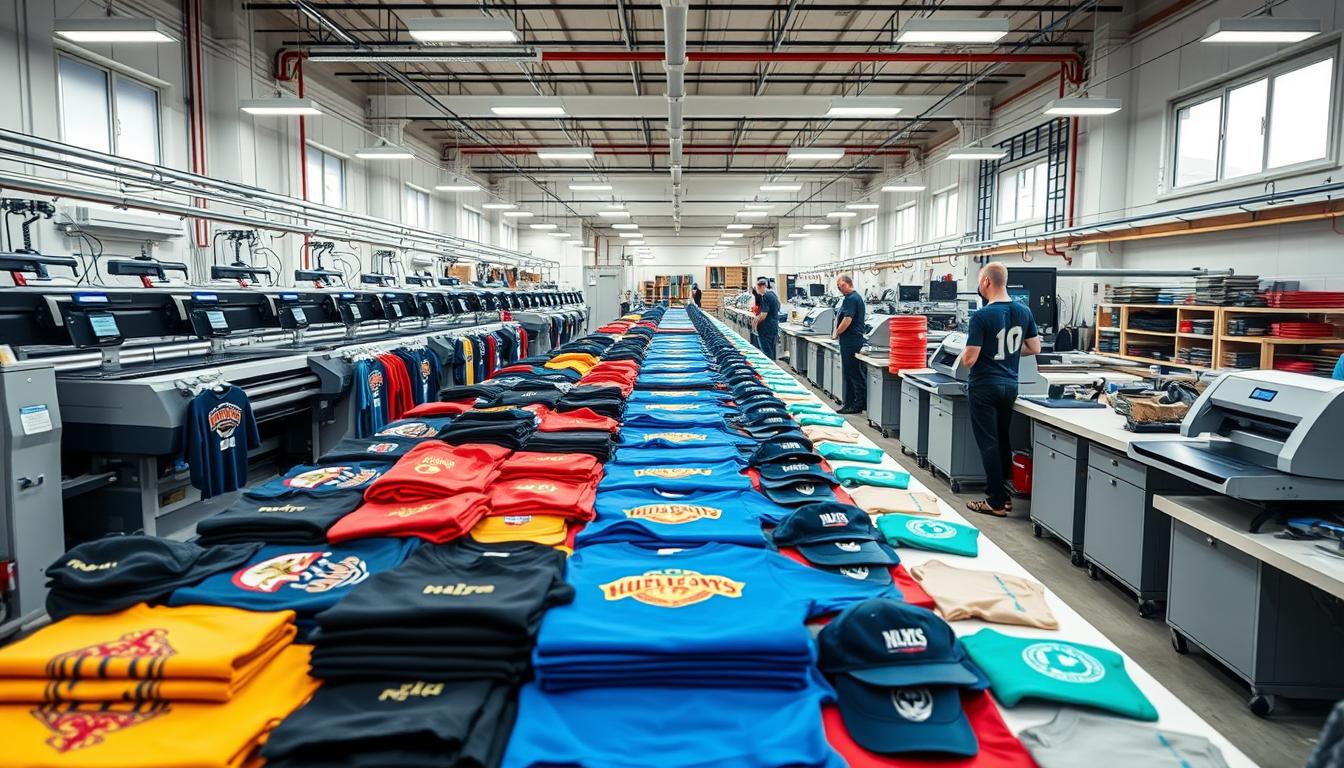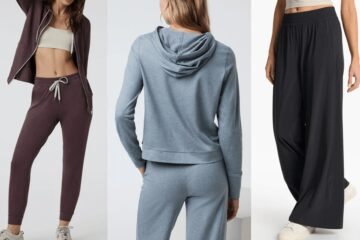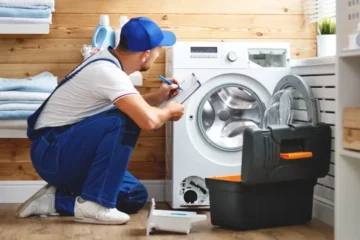Do you remember the excitement of seeing your design come to life? It was like magic when your idea turned into something real—a shirt, a hoodie, a hat—that people wanted to wear. Now, imagine feeling that excitement a thousand times as your brand grows.
But scaling isn’t just about making more products. It’s about making them better, faster, and with the same passion that drew in your first fans.
Partnerships are key. MFG Merch, based in Jacksonville, is more than just a printer. They help brands grow. Their team knows scaling a merch line is about finding solutions, not cutting corners. It’s about letting you focus on connecting with your audience.
Custom manufacturing connects small-batch passion with big demand. Want to try eco-friendly fabrics? Need quick holiday drops? These are chances to make your brand’s story even better. With the right partner, you can grow your collection without getting lost in details or sacrificing quality.
Key Takeaways
- Partnering with experts like MFG Merch streamlines growth while preserving brand integrity
- Custom production adapts to your unique needs, from material choices to order volumes
- Local manufacturing (like their Jacksonville hub) ensures closer quality control
- Scalability isn’t just about quantity—it’s about maintaining emotional resonance with customers
- Strategic collaborations free you to focus on creative and marketing priorities
Understanding Custom Production for Merch Brands
Custom production lets you make merchandise that fits your brand perfectly. It keeps costs steady. You control the design, materials, and how much you make – it’s like getting a custom-made suit.
What is Custom Production?
Custom production means making unique products with special partners. For example:
- Limited-edition apparel runs with original artwork
- Personalized accessories using customer-submitted designs
- Seasonal items made with eco-friendly materials
This method is great for flexibility. Brands like MFG Merch help adjust production based on demand. This prevents too much stock.
Benefits of Custom Production
Strategic partnerships are key to success. Uber’s partnership with Lucid and Nuro shows how it works:
- Exclusivity: Limited runs create urgency (45% of shoppers pay more for unique items)
- Adaptability: Switch designs faster than competitors using on-demand printing
- Quality control: Work directly with producers to maintain standards
These benefits are at the heart of a smart brand merch production strategy. Like Uber’s tech partnerships, MFG Merch connects you with trusted manufacturers. They handle the hard stuff, so you can focus on creativity.
Identifying Your Target Audience
Knowing who wants your merch is like having a roadmap for success. When you understand your audience well, you can make products that feel personally tailored to them. This is how you build loyalty and grow your merch business.
Researching Customer Preferences
Start by asking questions. Use surveys, polls, and social media tools to find out what your customers truly care about. For example, entrepreneur Caroline Zimbalist noticed a gap in sustainable options. She then offered biodegradable merch to meet this need.
- Track trending hashtags related to your niche
- Analyze competitor reviews for unmet needs
- Use Instagram Stories polls for real-time feedback
Building Buyer Personas
Turn data into relatable profiles. A buyer persona is a fictional character that represents your ideal customer. It combines demographics, interests, and pain points. This makes marketing decisions feel more human.
| Demographic | Preferences | Values | Buying Habits |
| Age 18-34 | Limited-edition drops | Sustainability | Shops via mobile apps |
| Age 35-50 | Classic designs | Durability | Prefers bundle deals |
| Age 51+ | Customizable options | Ethical production | Relies on email newsletters |
Update your personas every quarter. Markets change quickly, and staying in tune with your audience is key. This ensures you’re always ahead in growing your merch brand.
Designing Unique Merchandise
Ever wondered why some merch brands stand out while others fade into the background? The secret lies in design choices that blend creativity with practicality. Your custom merchandise production strategy needs to balance originality with trends people actually want to wear—like Zimbalist’s seaweed-based fabrics, which are eco-friendly and stylish.
Importance of Original Design
Original designs build brand recognition and loyalty. Think of your merch as wearable storytelling—it should reflect your brand’s personality while avoiding generic templates. A unique design not only grabs attention but also reduces competition. For example, limited-edition items with hand-drawn artwork often sell faster than mass-produced alternatives.
| Design Approach | Benefits | Risks | Best For |
| Timeless Designs | Long-term appeal, reusable across seasons | May feel outdated if not refreshed | Core logo items |
| Trend-Focused Designs | High initial demand, social media buzz | Short lifecycle, risk of oversaturation | Seasonal collections |
Incorporating Trends
Trends like sustainable materials or retro fonts can boost relevance, but they shouldn’t overshadow functionality. Zimbalist’s seaweed-based fabrics show how innovation meets demand—these materials are durable, biodegradable, and perfect for eco-conscious audiences. To stay ahead:
- Use trend forecasts from platforms like Pinterest or WGSN
- Test small batches before full production
- Prioritize comfort (e.g., moisture-wicking fabrics for activewear)
Remember: Trends fade, but well-designed merch lasts. Pair bold patterns with classic cuts, or add removable accessories to keep items versatile.
Choosing the Right Production Partner
Your merch brand’s success depends on the right production partner. Look for manufacturers who share your values and goals. Just like Uber, you need a team that offers reliability and innovation. Here’s how to find partners for growth without sacrificing quality.
Key Factors to Consider
Not all production partners are the same. Look for these essential traits:
- Sustainability practices: 67% of U.S. consumers prefer eco-friendly brands. Check if they use recycled materials or offer carbon-neutral shipping.
- Tech capabilities: Can they handle advanced features like holographic prints or RFID tagging? This future-proofs your merchandise.
- Scalability: Uber looked for partners who could grow with them. Your partner should handle small orders and large bulk orders.
| Evaluation Metric | Why It Matters | MFG Merch’s Approach |
| Turnaround Time | Meet holiday rush demands | Guaranteed 10-day production |
| Quality Control | Reduce returns & negative reviews | 3-stage inspection process |
| Transparency | Build trust in supply chain | Live order tracking portal |
Questions to Ask Potential Partners
Ask these key questions to cut through sales talk:
- “Can you provide references from brands in our niche?”
- “What’s your protocol for production delays?”
- “Do you offer inventory storage for seasonal items?”
Setting Up an Efficient Supply Chain
Your merch brand’s growth depends on a supply chain that balances speed, quality, and sustainability. For personalized merch production, this means selecting partners and processes that adapt to your unique designs while maintaining consistency. Let’s break down how to build this system.
Sourcing Quality Materials
Materials shape your product’s feel, durability, and eco-impact. Start by researching suppliers offering certified sustainable options. For example, Qore’s corn-based materials reduce plastic waste while providing print-ready surfaces for custom designs.
Consider these popular eco-friendly materials for merch:
| Material | Benefits | Best For |
| Organic Cotton | Soft texture, biodegradable | T-shirts, tote bags |
| Recycled Polyester | Durable, reduces landfill waste | Hoodies, hats |
| Corn-Based PLA (Qore) | Carbon-neutral, versatile | Phone cases, drinkware |
| Hemp | Low water usage, antibacterial | Accessories, apparel |
Streamlining Production Processes
Lean manufacturing principles keep your operations agile. Work with partners who use just-in-time production to minimize excess inventory. This approach lets you test new designs without overcommitting resources.
Three steps to optimize workflows:
- Automate order tracking to sync with your e-commerce platform
- Batch similar designs to reduce machine setup time
- Use digital proofing tools to eliminate physical sample waste
Remember: Faster turnaround times don’t require sacrificing quality. Many printers now offer 5–7 day production cycles for small-batch personalized merch – perfect for testing viral designs.
Effective Inventory Management Strategies
Managing your merch stock is like a tightrope act. Go too far one way, and you’ll lose money. The key is to stay balanced. This keeps your brand flexible, protects profits, and cuts down on waste. Let’s look at how to sidestep common mistakes and use modern methods that fit your brand.
Avoiding Overproduction
Producing too much merchandise can empty your wallet and fill up storage. Fast-fashion brands throw away 92 million tons of textiles every year because of too much stock. Here’s how to avoid this:
- Look at past sales to guess what will sell
- Test designs with small batches before making more
- Use pre-orders to see if people want your stuff
Ordering in small amounts and restocking often is better. It lets you keep up with changing trends without being stuck with old stock.
Utilizing On-Demand Production
On-demand manufacturing turns old inventory rules on their head. You make items after people buy them. This method has many perks:
- No unsold items taking up space
- Less money upfront for new brands
- More design options for customers
Platforms like print-on-demand work with your online store. They handle making and sending out items. This lets you focus on building a loyal customer base through your merch branding.
| Production Model | Waste Risk | Flexibility | Startup Cost |
| Traditional Bulk | High | Low | $5,000+ |
| On-Demand | None | High | $0-$500 |
Marketing Your Custom Products
To grow your brand, you need to reach the right people with the right message. Custom items need more than cool designs; they need a solid marketing plan. This plan should turn casual viewers into true fans. Let’s look at two key ways to boost your visibility while staying true to your brand.
Leveraging Social Media
Instagram and TikTok are great for showing off your unique items. First, find out where your audience hangs out. Gen Z loves TikTok, while millennials prefer Facebook. Share behind-the-scenes peeks or photos of people wearing your stuff.
Pro tip: Instagram Stories have a “Swipe Up” feature to link to your store. Zimbalist’s campaign with Chappell Roan saw a 40% sales boost. They mixed authentic fan moments with special releases. Here are some effective strategies:
- Run polls to let followers pick new designs
- Share photos of customers with your brand’s hashtag
- Use countdown stickers to build excitement for new items
Collaborating with Influencers
Influencers are like guides for their followers. Partner with those who truly love your brand, like Zimbalist did with music influencers. Aim for lasting partnerships, not just one-off posts, to build trust.
Here’s a 3-step plan for great influencer partnerships:
- Pick influencers who share your brand’s values
- Work together on special items (like “Artist Editions”)
- Watch engagement rates, not just how many followers they have
Remember, being real is key to growing your merch business. People can tell when a partnership feels forced. Keep your collaborations genuine and focused on your mission.
Selling Platforms for Your Merch
The debate between online and offline sales is not about who wins. It’s about finding a balance. Where you sell your custom merch affects how people find and interact with your brand. We’ll look at how to reach more customers while keeping things running smoothly.
E-commerce vs. Brick-and-Mortar: Finding Your Fit
Online stores are open 24/7 and cost less to start than physical shops. You can quickly test designs, change prices, and reach customers across the country. But, a local store can build personal connections and let people see your products in person.
Think about these points when choosing:
- Startup budget: Online stores need less money upfront
- Audience location: Local areas versus the whole world
- Product type: Big items often sell better in person
Many brands mix online and offline sales. For example, pop-up shops and Instagram sales can create excitement while keeping online shopping easy. MFG Merch’s e-commerce tools help manage both by tracking inventory in one place.
Online Marketplace Showdown
Not all digital platforms are the same for custom merch. Here’s how some top ones compare:
| Platform | Best For | Fees | Customization Options |
| Etsy | Handmade & niche items | 6.5% + listing fees | Medium |
| Shopify | Branded stores | Monthly subscription | High (integrates with MFG Merch) |
| Amazon | Mass-market appeal | 15-20% referral fees | Low |
| eBay | Limited editions | 13% + payment processing | Variable |
Shopify is great for brands wanting full control. It works directly with production partners like MFG Merch. This lets you manage screen printing designs, orders, and fulfillment without switching tabs. Want to learn more about MFG Merch’s services for easy store management?
Utilizing Customer Feedback
Ever wondered what your audience really thinks? Their opinions shape trends, reveal pain points, and highlight opportunities you might miss. Successful merch brands like Lycra prove that listening isn’t just polite—it’s profitable. Let’s explore how to turn raw feedback into growth fuel.
Collecting Customer Insights
Start conversations where your buyers already hang out. Social media polls, post-purchase surveys, and review sections work wonders. Lycra boosted sales by 23% after launching weekly Instagram Q&A sessions. Try these methods:
- Email surveys with quick rating scales (1-5 stars)
- Comment analysis tools to spot recurring keywords
- Limited-time feedback discounts (“Share your thoughts, get 15% off”)
Track responses in a shared spreadsheet. Color-code positive vs. critical notes to spot patterns fast.
Adjusting Your Offerings
Lycra’s game-changer? They redesigned their bestselling leggings based on 1,200+ reviews mentioning “waistband slippage.” After testing 3 prototypes with loyal customers, they launched a revised version that sold out in 48 hours. Follow their playbook:
- Prioritize feedback affecting 10%+ of customers
- Create small test batches of improved products
- Share updates publicly (“You spoke, we listened!”)
One yoga studio owner used this approach to switch from polyester to eco-friendly bamboo blends—now it’s their top-selling item. Remember: minor tweaks often deliver major returns.
Scaling Production Responsibly
Growing your merch brand doesn’t mean losing its special touch. Uber’s approach to adding robotaxis is a good example. They grew slowly to keep things safe and earn customer trust. Your production growth should aim for the same balance.
Managing Growth without Compromise
Phased expansion keeps your brand’s soul intact. Begin with small batches and then double orders. This method helps you catch problems early, just like Uber did with its self-driving cars.
Here are three ways to scale wisely:
- Train your team on new workflows before you increase production
- Work with suppliers who offer flexible order quantities
- Use customer demand data to plan your inventory (no guessing!)
Ensuring Quality Control
Just because you’re making more doesn’t mean you should lower your standards. Here’s how to keep quality high:
- Make a 5-point checklist for every production batch
- Do random sample checks every week
- Have third-party audits every quarter
Remember, 68% of customers won’t come back after a bad experience. Scaling responsibly means every order, from the 1st to the 100th, is just as special.
FAQ
What is custom production, and why does it matter for scaling my merch brand?
Custom production is making merchandise that fits your brand’s needs. It lets you create unique items that stand out. Working with a trusted partner like MFG Merch in Jacksonville helps you grow without losing quality. It’s like Uber’s smart partnerships that help them grow.
How does custom manufacturing solve scalability challenges while maintaining quality?
Custom manufacturing makes it easy to increase production as needed. Brands like Uber grow by being flexible. MFG Merch in Jacksonville uses advanced tech and local expertise to keep your merchandise top-notch, even when orders go up.
Why is understanding my audience critical for merch success?
Knowing what your audience likes is key. For example, Zimbalist’s eco-friendly designs appeal to green buyers. Use surveys and social media to get to know your audience better. This way, your designs and messages will hit the mark.
How do I balance originality with wearable functionality in merch design?
Get inspiration from innovators like Zimbalist, who creates stylish yet practical accessories. Stay on trend but also think about comfort and usefulness. Your merchandise should be both trendy and wearable.
How does material sourcing impact my brand’s reputation?
Using eco-friendly materials like Qira’s biodegradable fabrics shows you care about the planet. MFG Merch sources responsibly and uses smart production methods to reduce waste. This helps build a brand that’s both sustainable and scalable.
Can on-demand production reduce inventory risks for newer brands?
Yes! On-demand production means making items only when they’re ordered. This avoids the problem of having too much stock. MFG Merch supports this approach, helping you grow while keeping costs low.
What marketing strategies work best for custom merch?
Social media campaigns and influencer partnerships are great. For example, Zimbalist’s collaboration with Chappell Roan went viral. Show your production process with MFG Merch to highlight quality. Also, use user-generated content and limited editions to create buzz.
Should I focus on e-commerce or brick-and-mortar for selling merch?
A mix of both is often best. Use online stores for global reach and pop-up shops for hands-on experiences. See where your customers prefer to shop, whether it’s Shopify or Etsy.
What future trends should I watch in custom merchandise?
Look out for sustainable materials and tech integrations. Innovators like Zimbalist and Lucid Motors are leading the way. Stay ahead by blending eco-friendly innovation with smart production.



